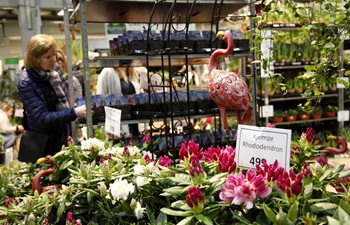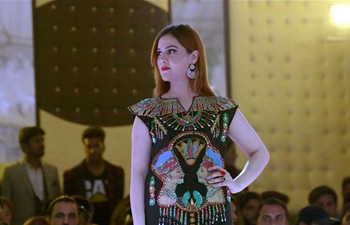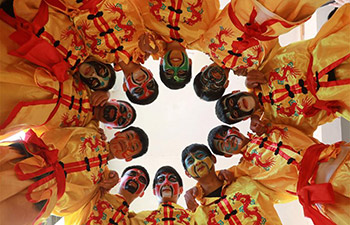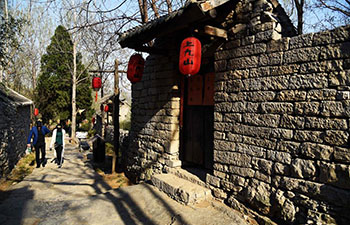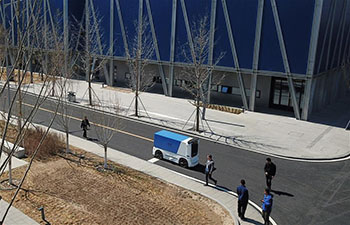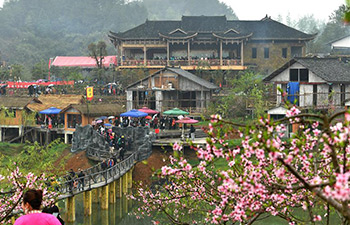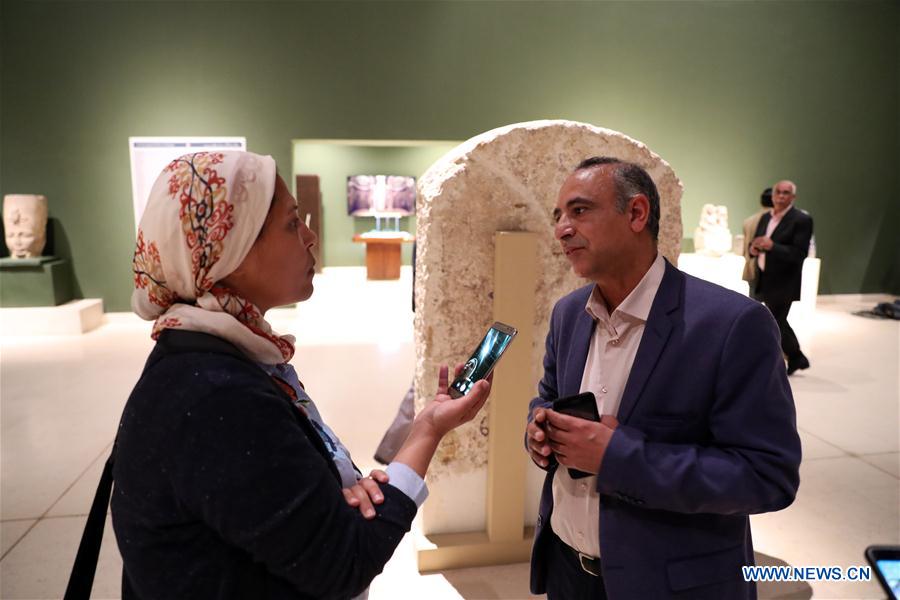
Ahmad Ezz (R, Front), chairman of the Sohag National Museum (SNM), speaks during an interview in Sohag, Egypt, on April 6, 2019. The Upper Egypt's Sohag National Museum (SNM) portrays the Egyptian identity through highlighting historic, cultural and civilizational changes, said Ahmad Ezz in an exclusive interview with Xinhua. (Xinhua/Ahmed Gomaa)
by Marwa Yahya
SOHAG, Egypt, April 6 (Xinhua) -- The Upper Egypt's Sohag National Museum (SNM) portrays the Egyptian identity through highlighting historic, cultural and civilizational changes, said Ahmad Ezz, chairman of the SNM, said in an exclusive interview with Xinhua.
Overlooking the Nile in the Upper Egyptian town of Sohag, about 390 km south of the capital Cairo, the SNM was established on a two-storey Ancient Egyptian temple, with a dock for ferries and exquisite landscaping dotted with water channels and fountains. Five colossi of the lion goddess Sekhmet stand before the museum's entrance to welcome visitors.
"The aim of the museum was not only to reflect the unique history of the province from prehistory to modern times, but also to highlight the Egyptian identity through the changes that had taken place in Upper Egypt," Ezz said.
He explained that the museum showcases six influential aspects of Egyptian life in different eras, focusing on kingship, family, cooking and cuisine, faith and religion, employment, industry and textiles and handicrafts.
The museum displayed nearly 4,000 artifacts, most of which were uncovered in different archaeological sites near Sohag, Ezz highlighted.
"The concept of the museum is no longer dependent on the traditional method of placing artifacts next to each other, without thematic story, to illustrate Ancient Egyptian civilization," he added.
The exhibition design of the SNM provides clear information about the history of Sohag, Abydos and Akhmim, as well as the role played by local rulers in building Egyptian civilization.
Sohag was the town where the kings of the early dynasties lived, which explained the selection of kingship as the first topic in the new museum. The focal object here is a colossus of the Pharaoh Ramses II because he was one of the most influential rulers in Egyptian history and had a temple in Abydos, the SNM's chairman said.
The museum's first hall displayed a collection of Stelae and engravings of his father Seti I, who had a beautiful temple in Abydos, along with heads of other kings and statues of top officials who played an important role in the New Kingdom, dated from the 16th century BC to the 11th century BC.
The second part presents the family life and bond in Upper Egypt especially the burial rituals and marriage traditions, while the third section of the museum is devoted to cooking and cuisine.
The SNM's basement is allocated to the theme of pilgrimage, as the ancient Egyptians used to go to Abydos on pilgrimage where a temple to the god Osiris built by Seti 1 is located.
"The most-distinguished object in the museum is a statue of the Sixth-Dynasty army leader Wini who was also the first known military leader in the Ancient Egyptian army," Ezz said.
The Sohag Museum includes an audio-visual hall to provide visitors with the needed information as well as a library and a lecture hall.
"History teachers in schools can deliver their classes in the museum to make them more attractive to the pupils," Ezz said.
"We are working on a documentary movie for the students to explain the Egyptian history in different eras and the life of queens and kings in simple way for raising awareness of the young generations about the importance of history," he added.
Sohag is well-known for its distinguished and rich archaeological sites from the early Ancient Egyptian era right up to the Ptolemaic, Graeco-Roman, Coptic and Islamic periods. But it is rarely visited by tourists, the SNM chairman lamented.
The Sohag museum was inaugurated in August 2018, 29 years after its foundational stones were placed. The project was set to be completed in 1995 but the construction process has been delayed several times because of technical and interior design issues as well as lack of financial resources.


